Abstract
An analysis was made of the spread of foot-and-mouth disease during the epidemic in Hampshire in January and February 1967. To explain the pattern of spread, it had to be postulated that virus was present seven days before the first outbreak was reported. It is suggested that the disease occurred initially in pigs fed on infected meat and that the virus was subsequently disseminated from the local abattoir, where the pigs were killed, to four farms by movement of animals, slaughterhouse waste, people or vehicles, and to fifteen by the airborne route. Subsequent spread from these farms was by movement in two instances and by the airborne route in five. The source and route of infection of the last farm in the outbreak were not determined.
The risk of spread through movement was associated more with carriage of infected slaughterhouse waste, movement of animals, people or vehicles carrying animals than through collection of milk, artificial insemination or movement of other types of vehicles. Outbreaks of disease among pigs gave rise to more secondary spread than outbreaks in cattle. Secondary outbreaks attributed to airborne spread occurred only in ruminants. Most airborne spread was into areas of high livestock density and cattle in the larger herds became infected. Airborne spread could be correlated with wind direction and speed but not with rain. The reduction in the number of outbreaks at the end of the epidemic could be attributed to the elimination of the largest sources of virus, the control of movements and the fact that in all instances except two the wind was blowing virus over towns and out to sea, to areas of low stock density and to areas where animals had been killed.
Full text
PDF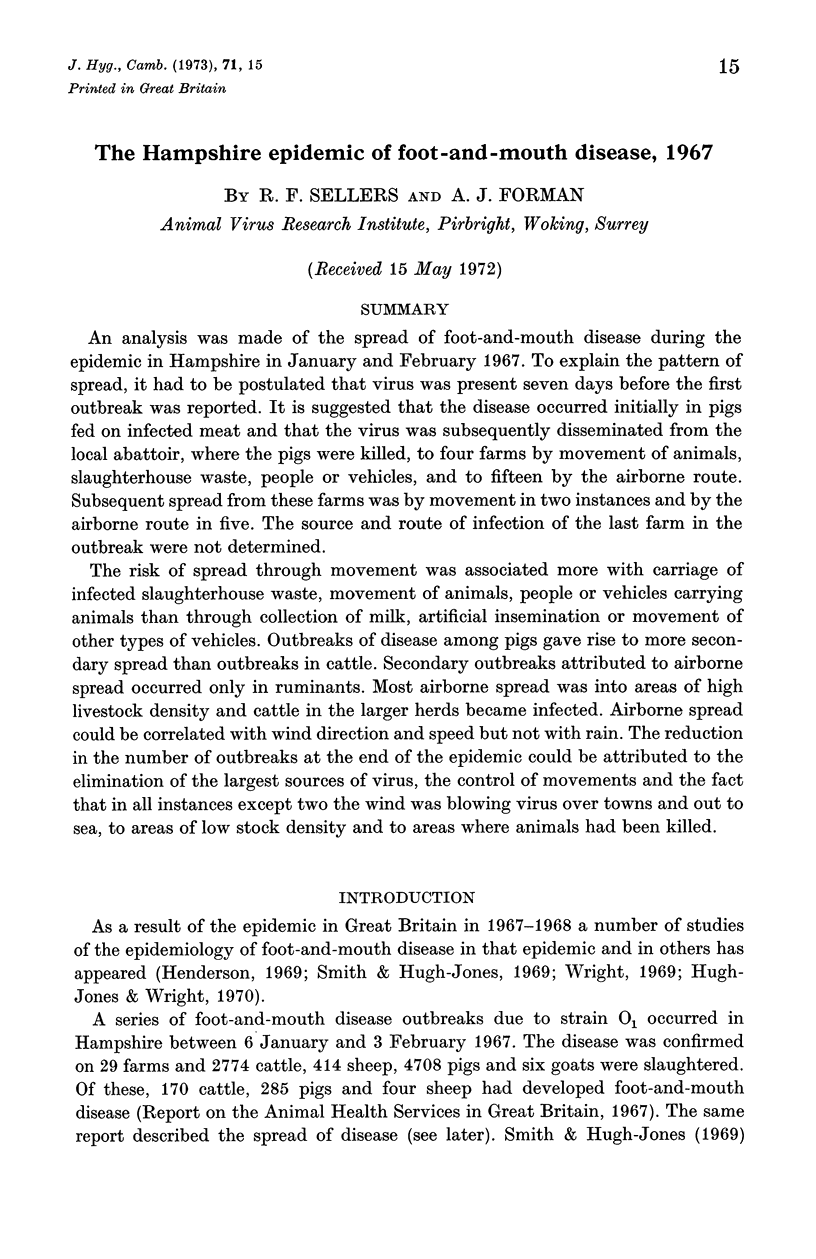
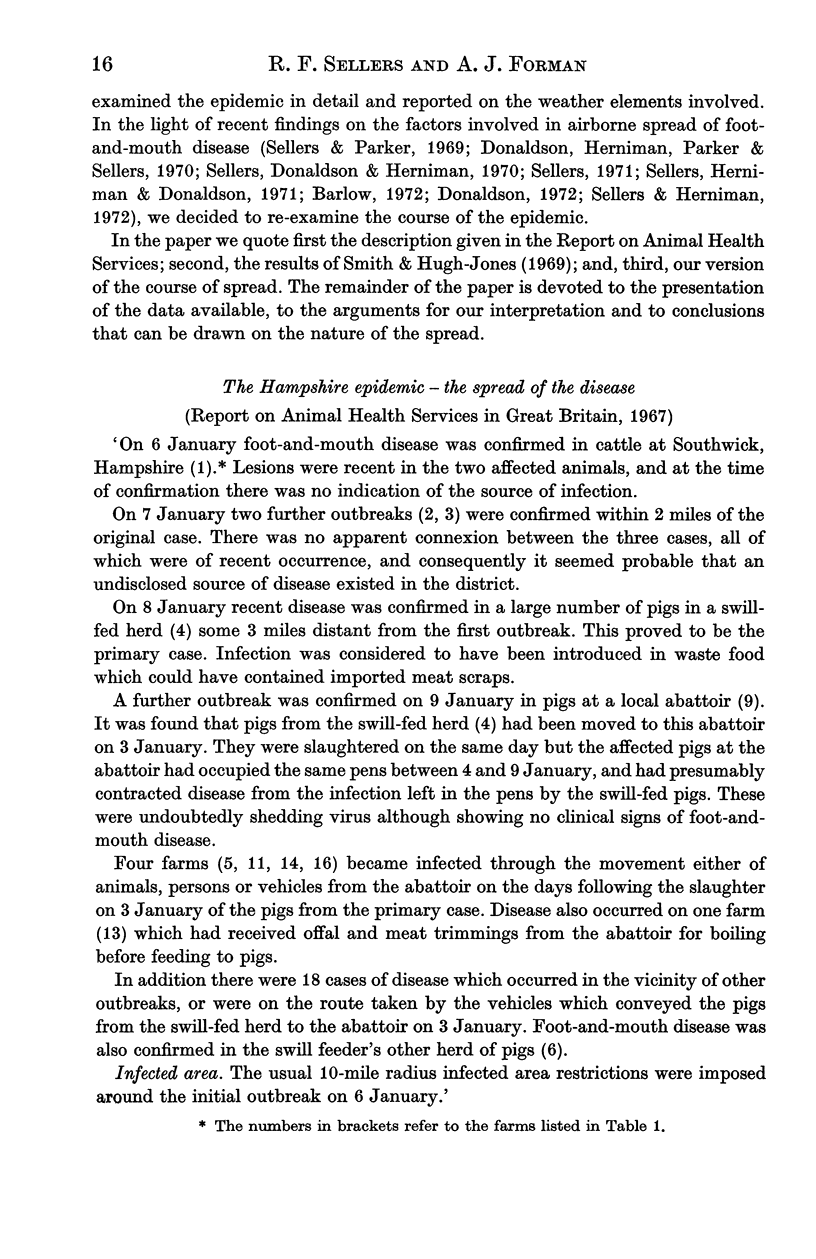
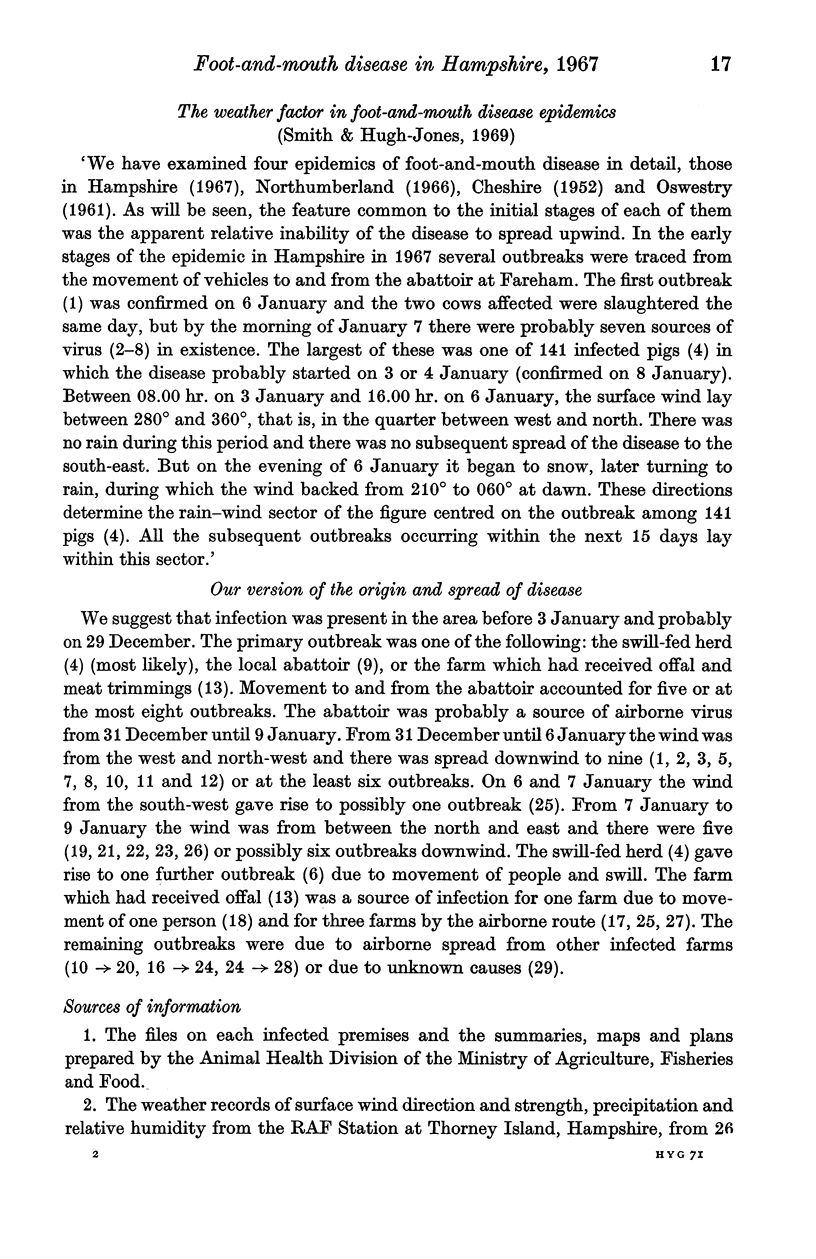
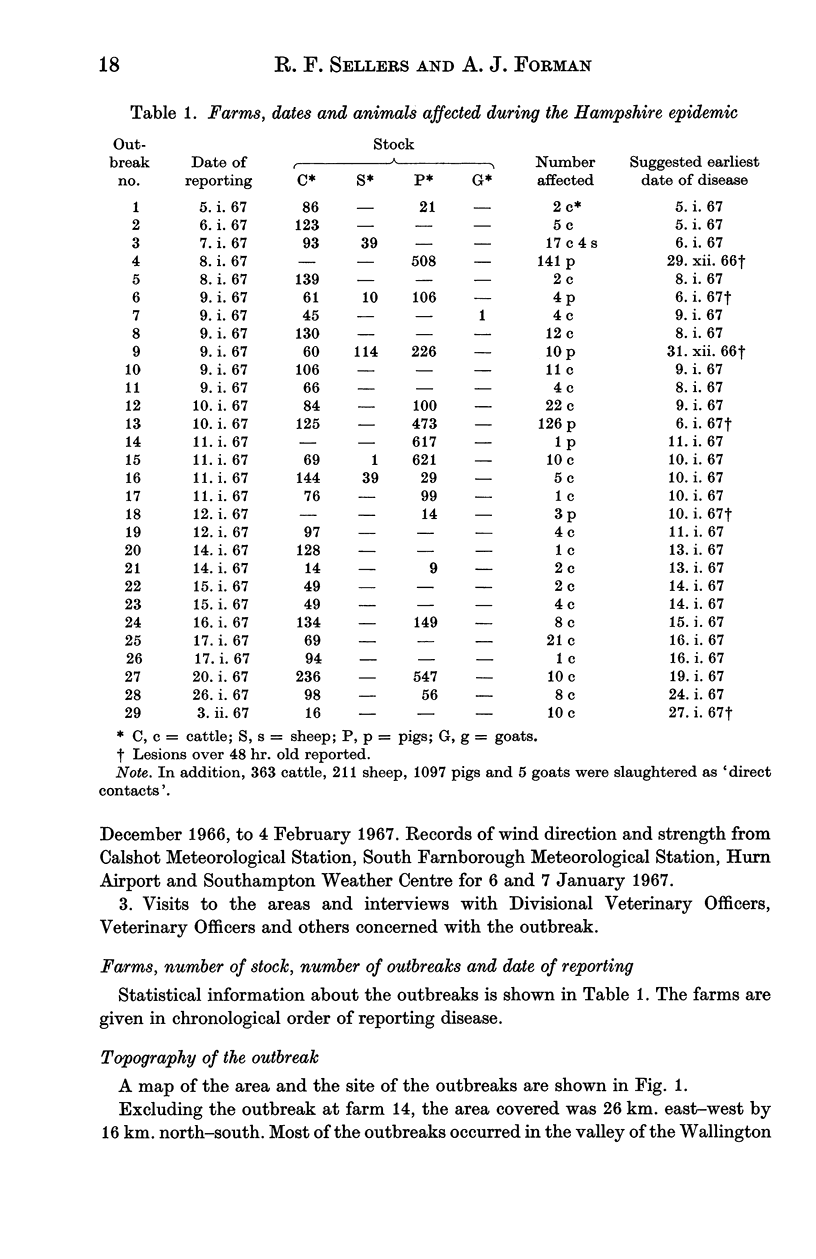
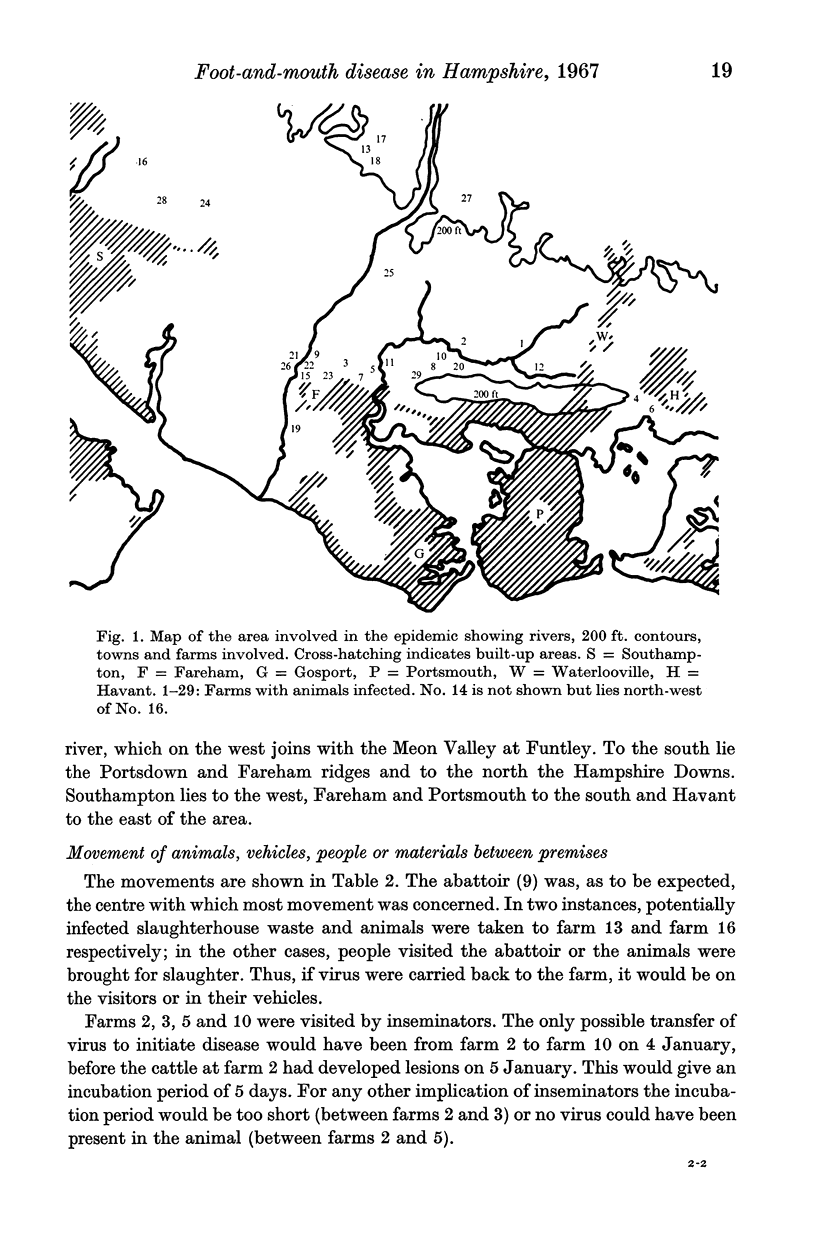
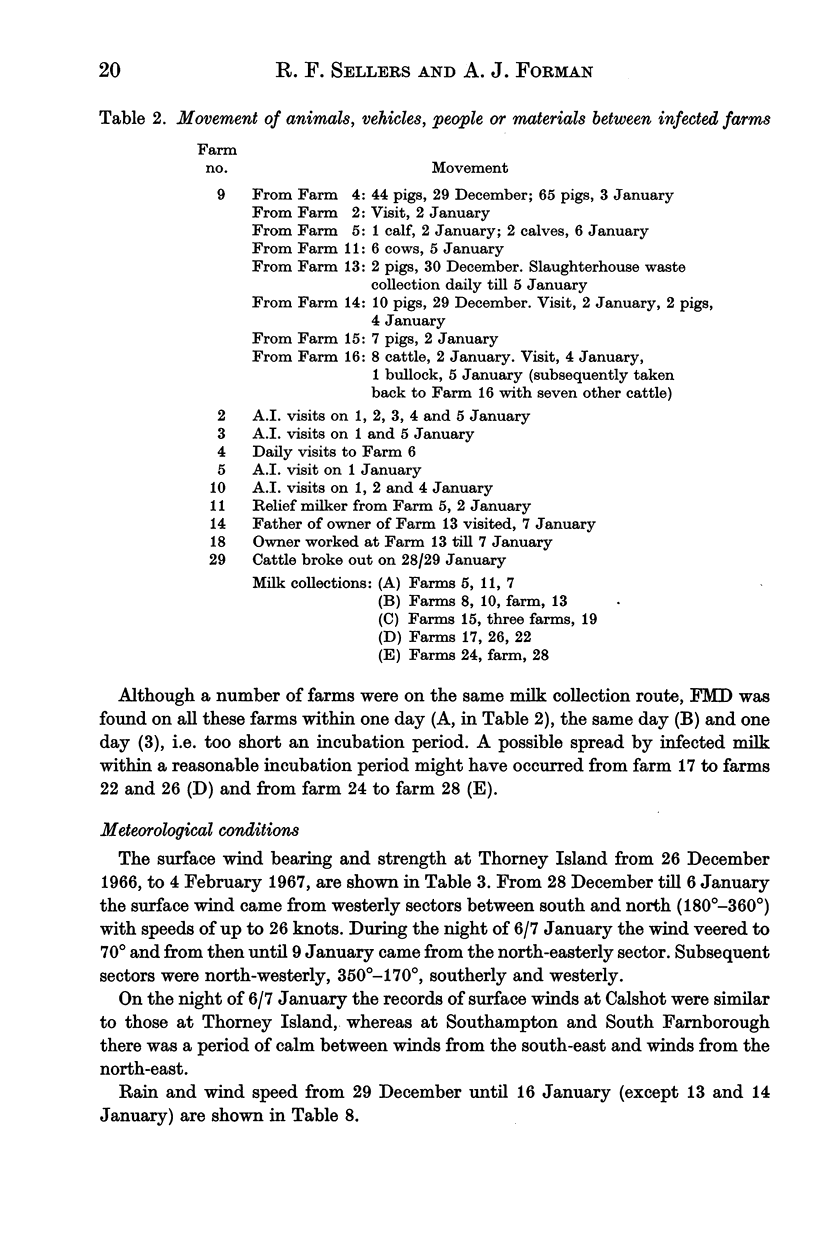
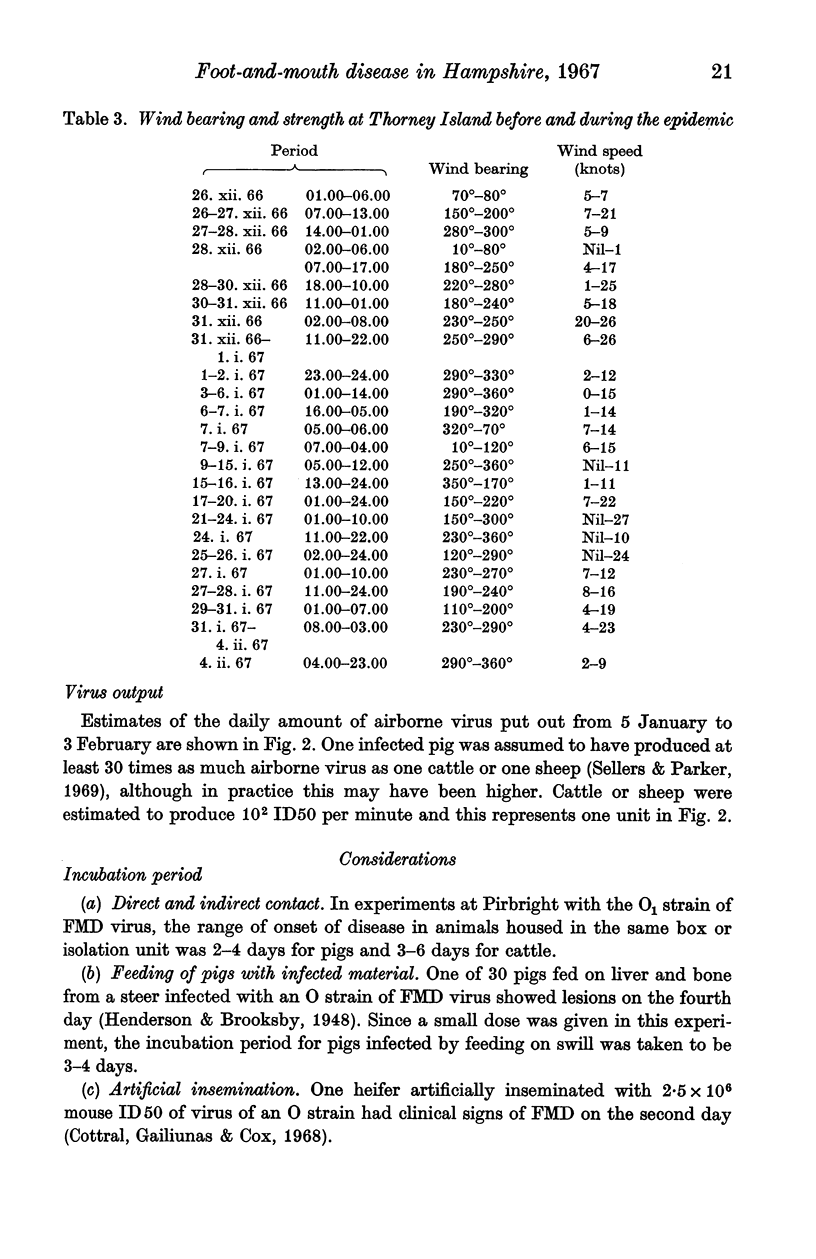
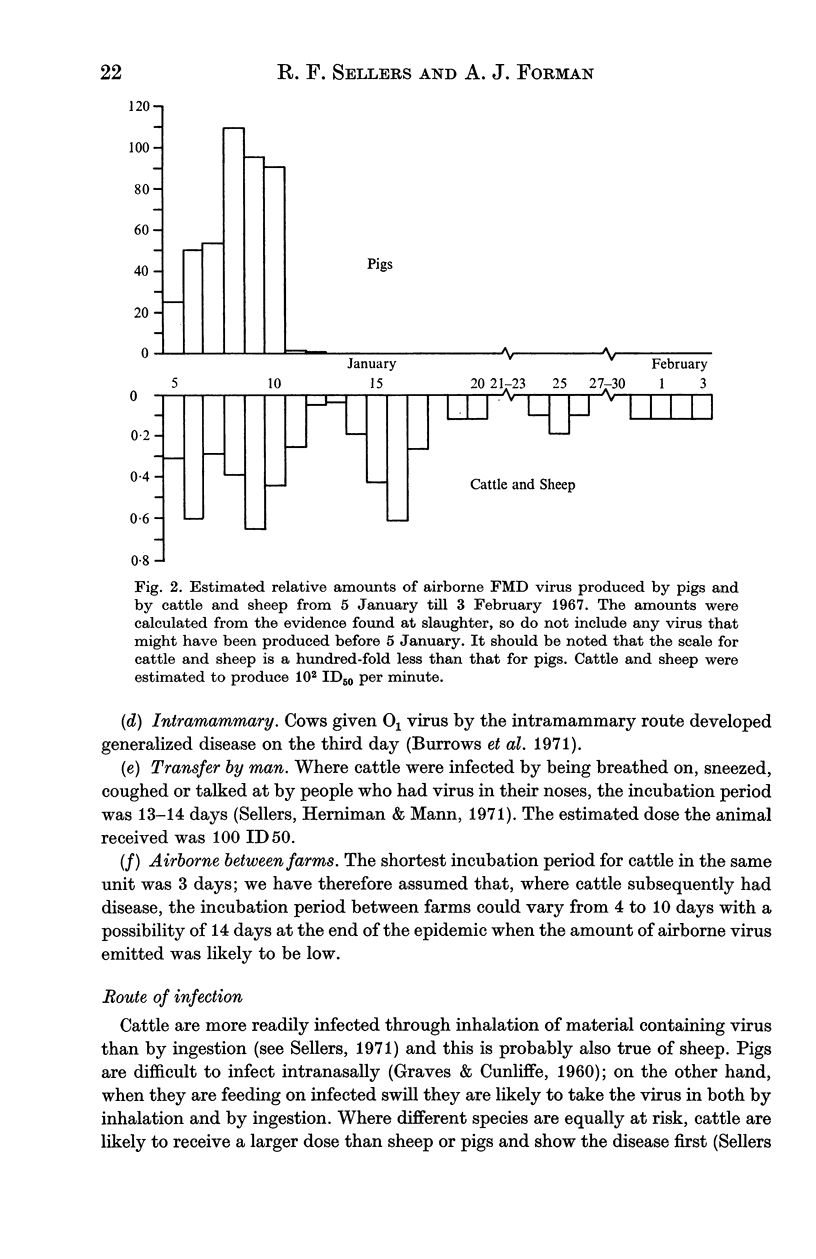
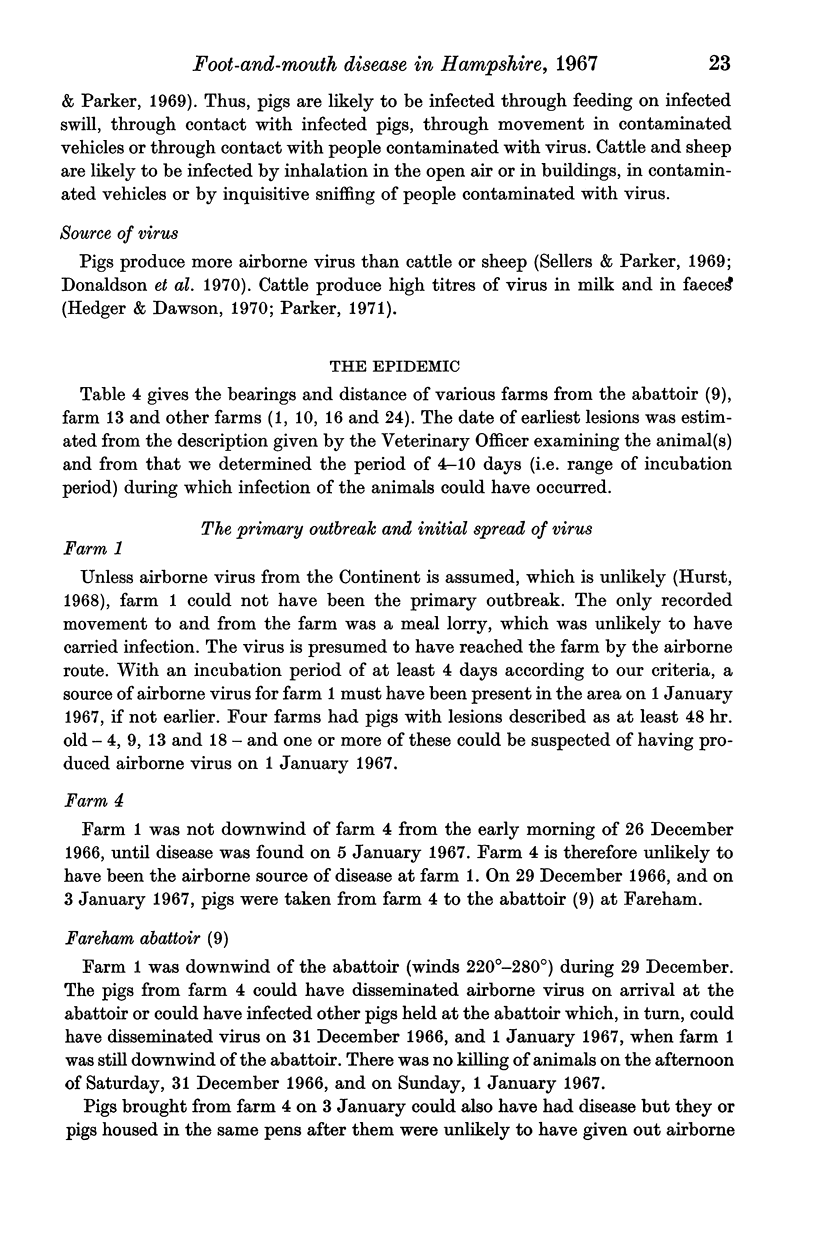


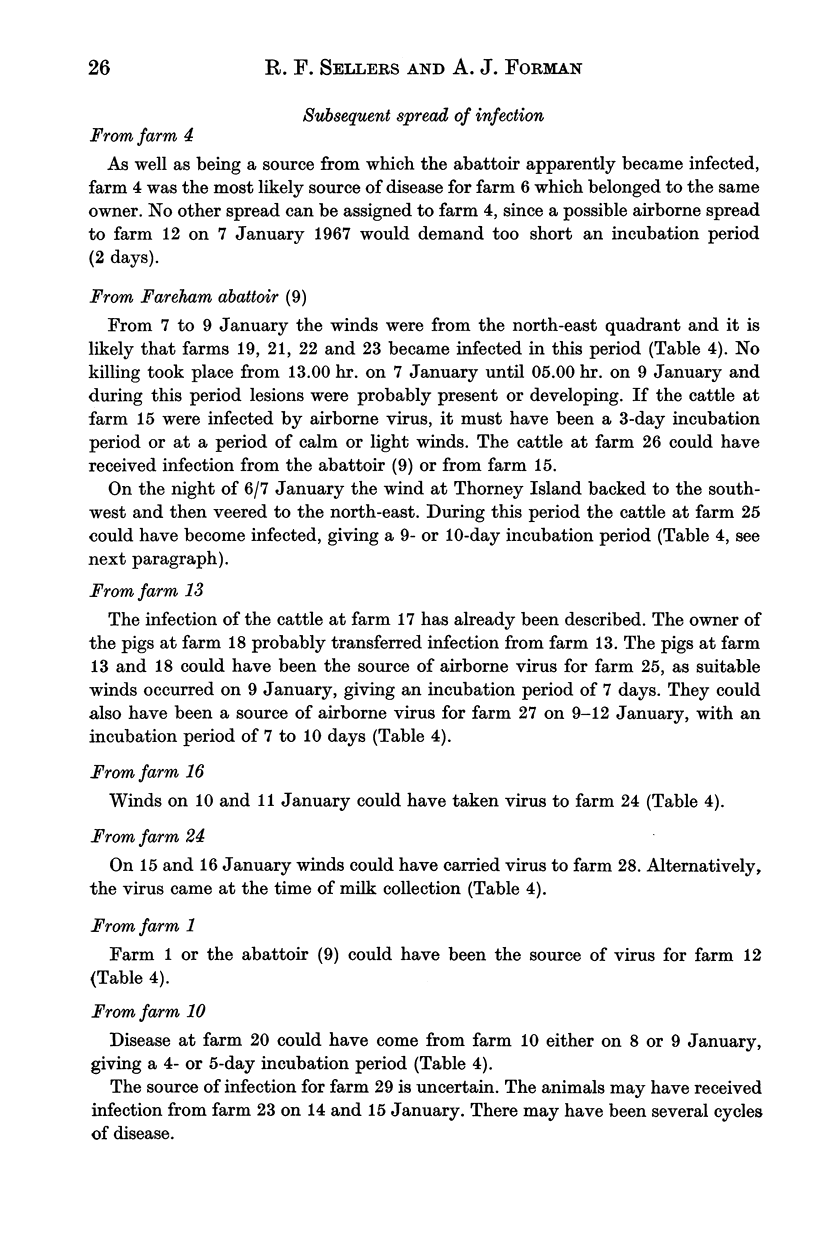
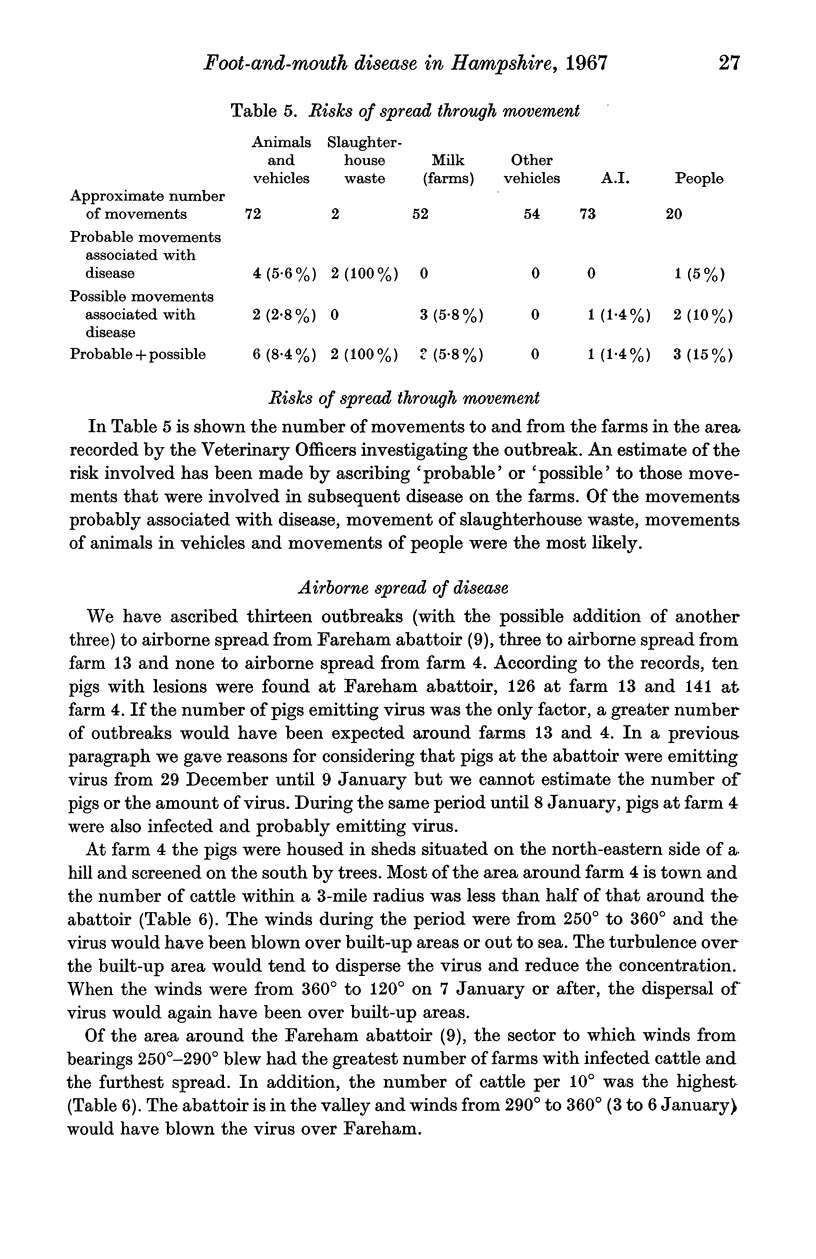
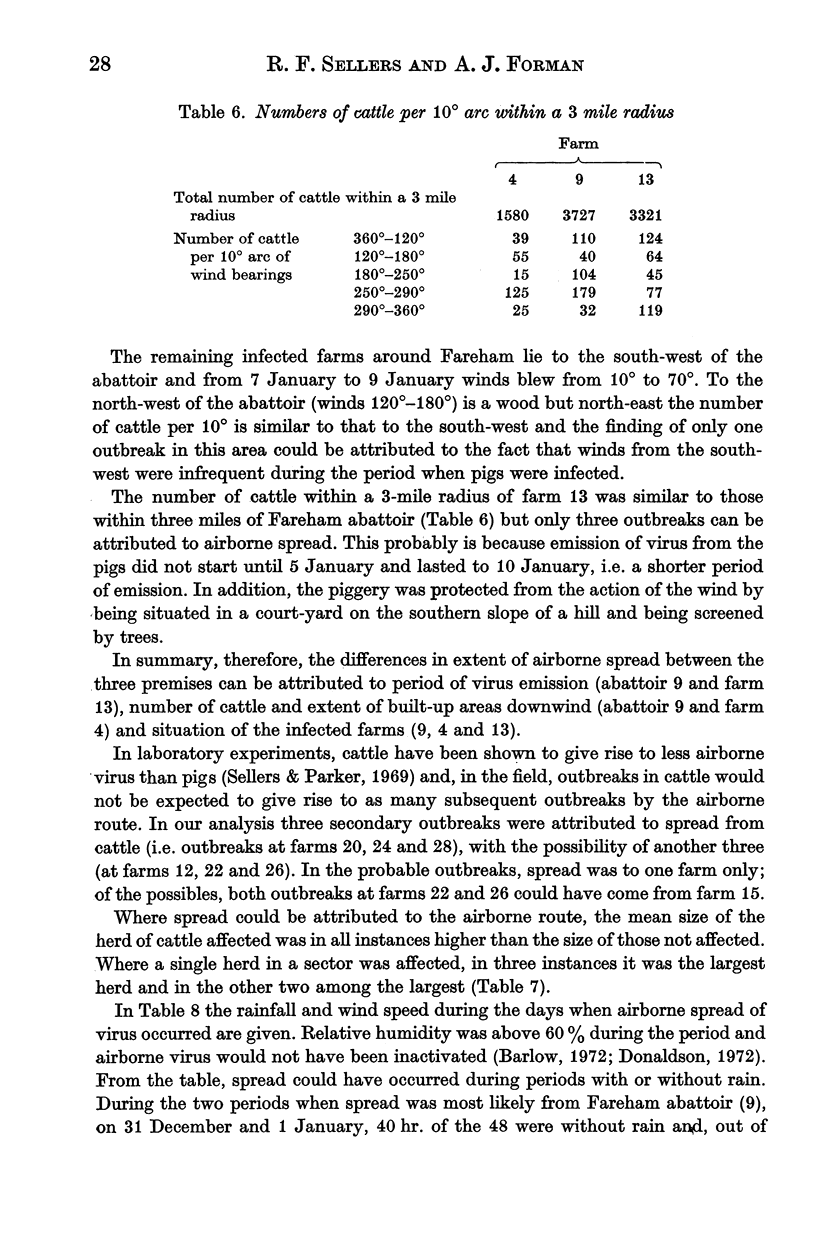
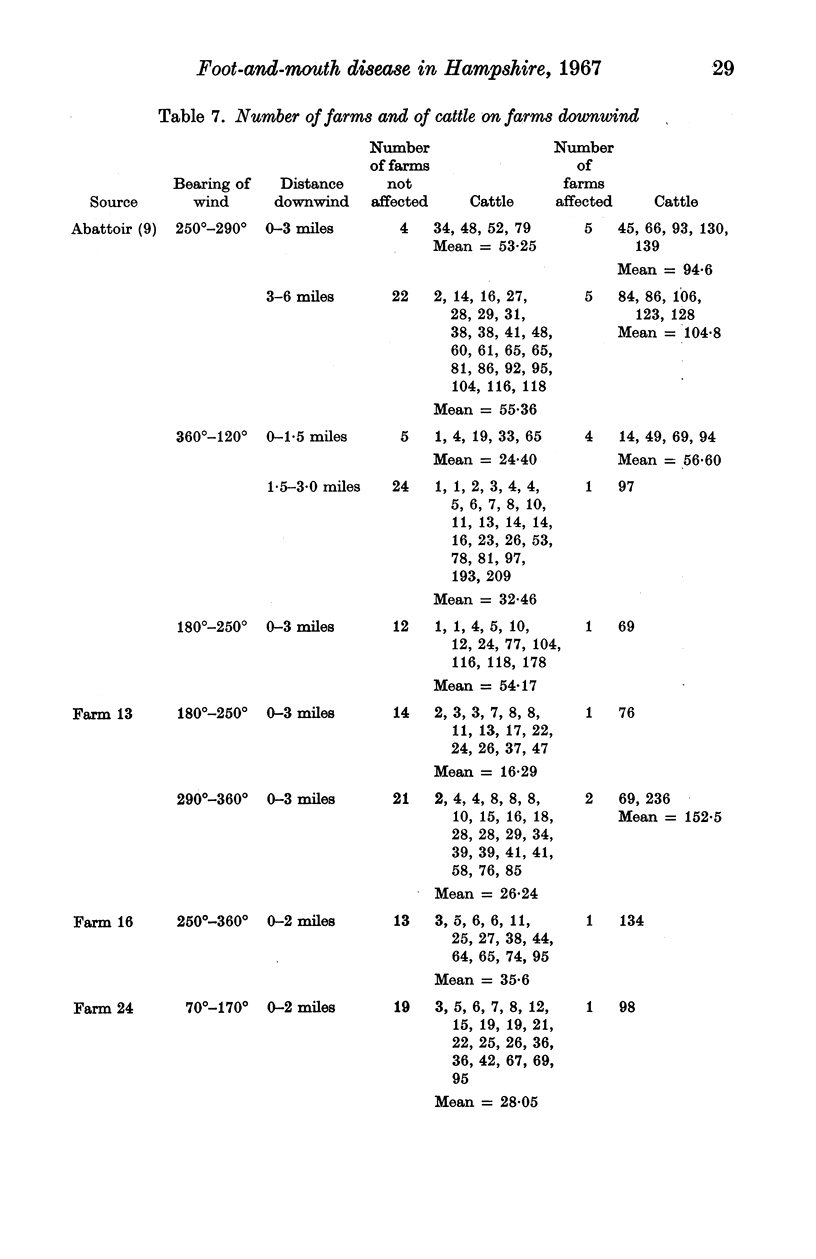
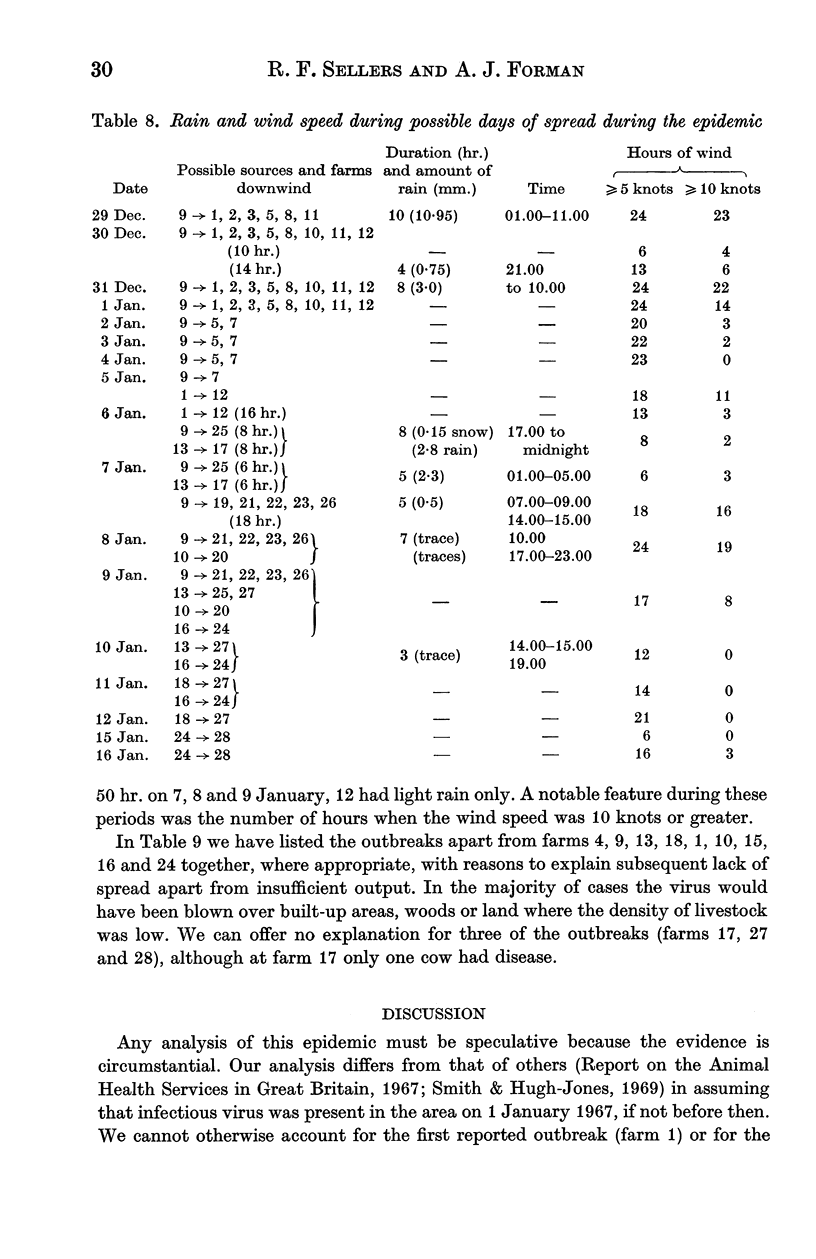
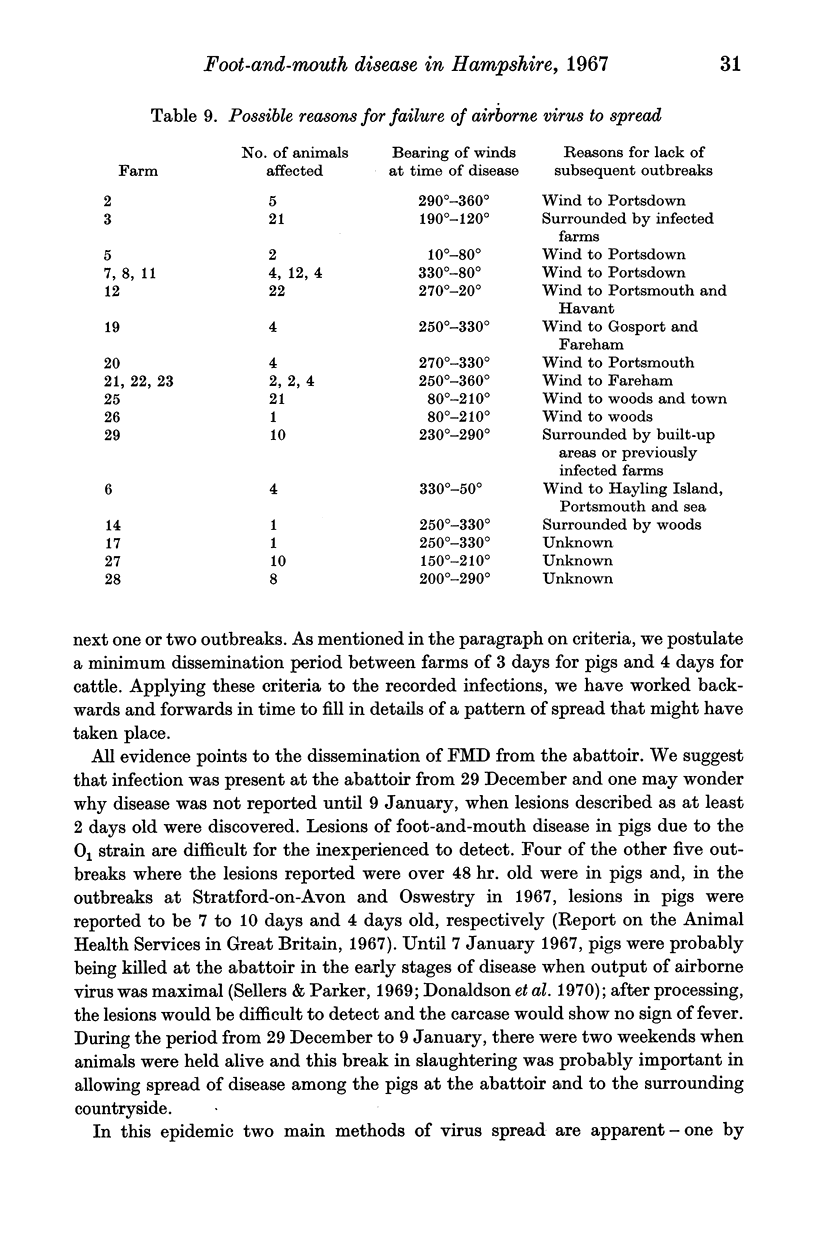
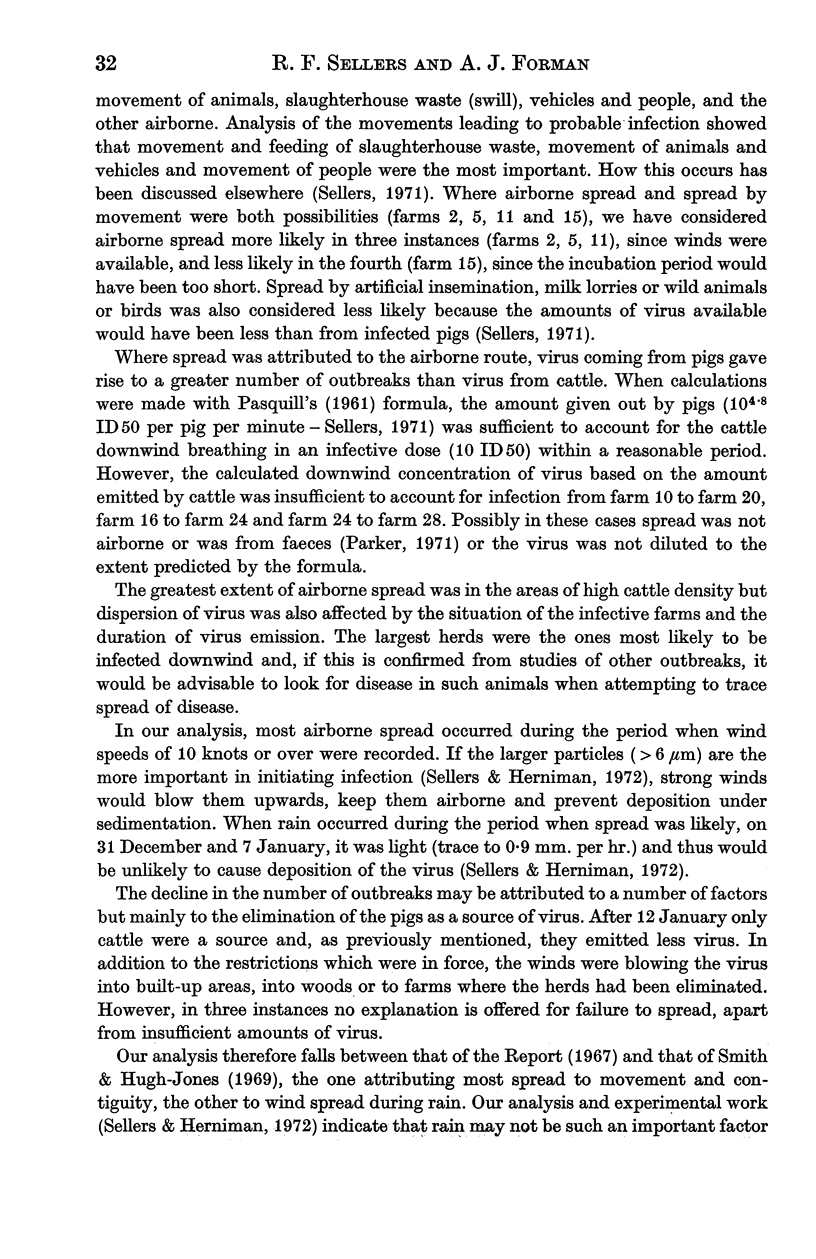
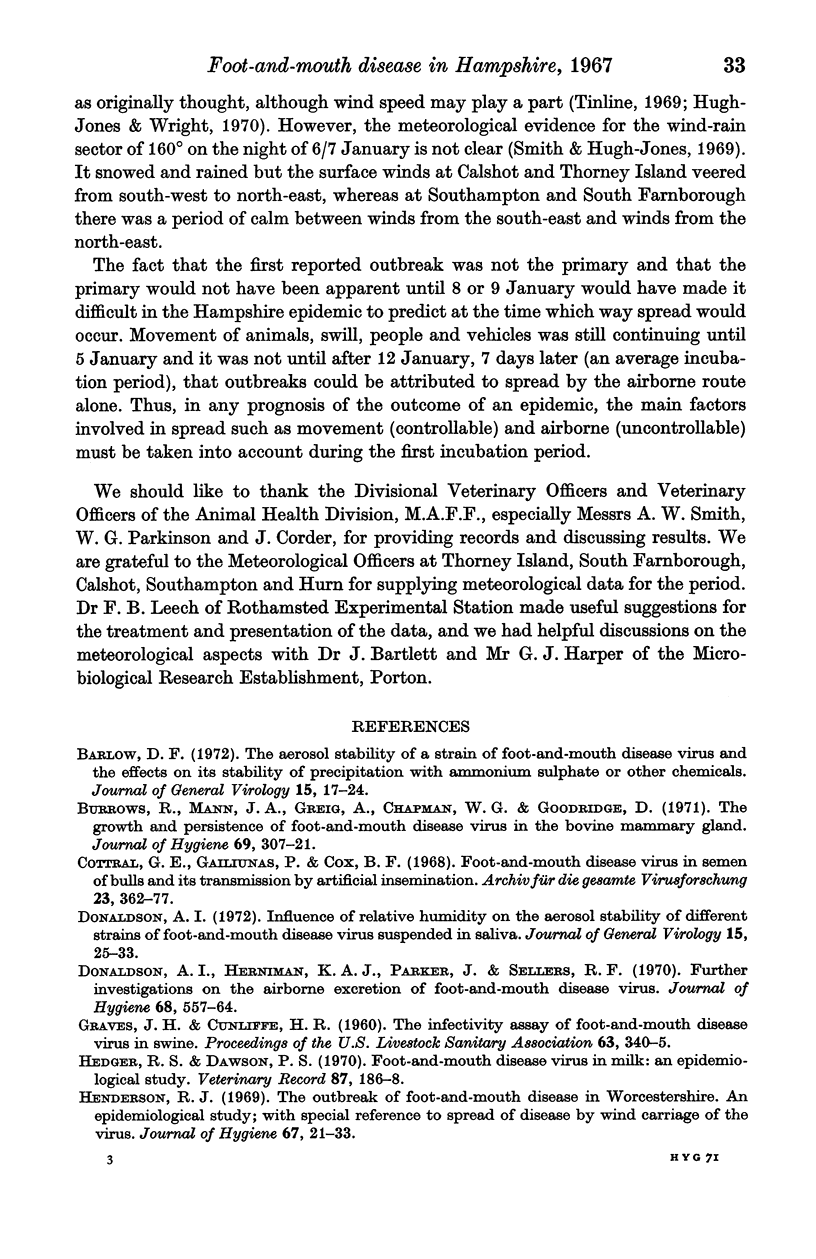
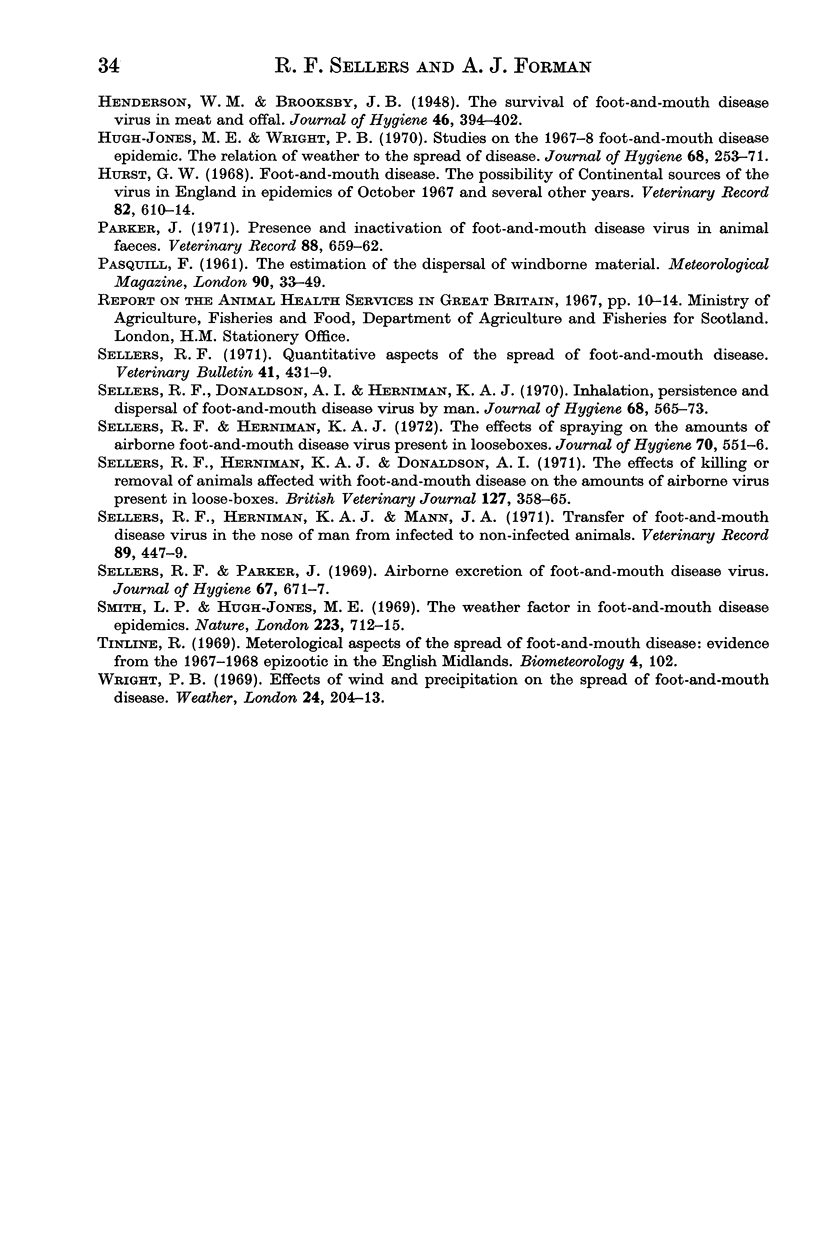
Selected References
These references are in PubMed. This may not be the complete list of references from this article.
- Barlow D. F. The aerosol stability of a strain of foot-and-mouth disease virus and the effects on stability of precipitation with ammonium sulphate, methanol or polyethylene glycol. J Gen Virol. 1972 Apr;15(1):17–24. doi: 10.1099/0022-1317-15-1-17. [DOI] [PubMed] [Google Scholar]
- Burrows R., Mann J. A., Greig A., Chapman W. G., Goodridge D. The growth and persistence of foot-and-mouth disease virus in the bovine mammary gland. J Hyg (Lond) 1971 Jun;69(2):307–321. doi: 10.1017/s0022172400021537. [DOI] [PMC free article] [PubMed] [Google Scholar]
- Cottral G. E., Gailiunas P., Cox B. F. Foot-and-mouth disease virus in semen of bulls and its transmission by artificial insemination. Arch Gesamte Virusforsch. 1968;23(4):362–377. doi: 10.1007/BF01242132. [DOI] [PubMed] [Google Scholar]
- Donaldson A. I., Herniman K. A., Parker J., Sellers R. F. Further investigations on the airborne excretion of foot-and-mouth disease virus. J Hyg (Lond) 1970 Dec;68(4):557–564. doi: 10.1017/s0022172400042480. [DOI] [PMC free article] [PubMed] [Google Scholar]
- Donaldson A. I. The influence of relative humidity on the aerosol stability of different strains of foot-and-mouth disease virus suspended in saliva. J Gen Virol. 1972 Apr;15(1):25–33. doi: 10.1099/0022-1317-15-1-25. [DOI] [PubMed] [Google Scholar]
- Hedger R. S., Dawson P. S. Foot-and-mouth disease virus in milk: an epidemiological study. Vet Rec. 1970 Aug 15;87(7):186–passim. doi: 10.1136/vr.87.7.186. [DOI] [PubMed] [Google Scholar]
- Henderson R. J. The outbreak of foot-and-mouth disease in Worcestershire. An epidemiological study: with special reference to spread of the disease by wind-carriage of the virus. J Hyg (Lond) 1969 Mar;67(1):21–33. doi: 10.1017/s0022172400041383. [DOI] [PMC free article] [PubMed] [Google Scholar]
- Hugh-Jones M. E., Wright P. B. Studies on the 1967-8 foot-and-mouth disease epidemic. The relation of weather to the spread of disease. J Hyg (Lond) 1970 Jun;68(2):253–271. doi: 10.1017/s0022172400028722. [DOI] [PMC free article] [PubMed] [Google Scholar]
- Parker J. Presence and inactivation of foot-and-mouth disease virus in animal faeces. Vet Rec. 1971 Jun 19;88(25):659–662. doi: 10.1136/vr.88.25.659. [DOI] [PubMed] [Google Scholar]
- Sellers R. F., Donaldson A. I., Herniman K. A. Ihalation, persistence and dispersal f foot-and-mouth disease virus by man. J Hyg (Lond) 1970 Dec;68(4):565–573. doi: 10.1017/s0022172400042492. [DOI] [PMC free article] [PubMed] [Google Scholar]
- Sellers R. F., Herniman K. A., Donaldson A. I. The effects of killing or removal of animals affected with foot-and-mouth disease on the amounts of airborne virus present in looseboxes. Br Vet J. 1971 Aug;127(8):358–365. doi: 10.1016/s0007-1935(17)37440-7. [DOI] [PubMed] [Google Scholar]
- Sellers R. F., Herniman K. A., Mann J. A. Transfer of foot-and-mouth disease virus in the nose of man from infected to non-infected animals. Vet Rec. 1971 Oct 16;89(16):447–449. doi: 10.1136/vr.89.16.447-a. [DOI] [PubMed] [Google Scholar]
- Sellers R. F., Herniman K. A. The effects of spraying on the amounts of airborne foot-and-mouth disease virus present in loose-boxes. J Hyg (Lond) 1972 Sep;70(3):551–556. doi: 10.1017/s0022172400063130. [DOI] [PMC free article] [PubMed] [Google Scholar]
- Sellers R. F., Parker J. Airborne excretion of foot-and-mouth disease virus. J Hyg (Lond) 1969 Dec;67(4):671–677. doi: 10.1017/s0022172400042121. [DOI] [PMC free article] [PubMed] [Google Scholar]
- Smith L. P., Hugh-Jones M. E. The weather factor in foot and mouth disease epidemics. Nature. 1969 Aug 16;223(5207):712–715. doi: 10.1038/223712a0. [DOI] [PubMed] [Google Scholar]


